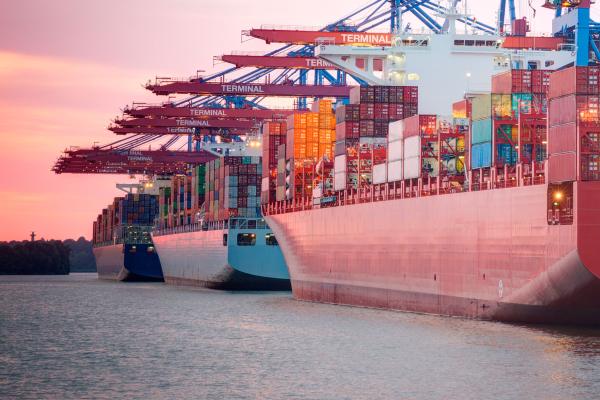Insights on Customs & Import Compliance
313 total results. Page 10 of 13.
In view of the recent action taken by President Trump in an Executive Order regarding Hong Kong’s status, US importers should prepare for increased risk exposure in US-Hong Kong trade.
Certain products from France, including leather handbags, and certain beauty preparations and soaps, will soon become pricier. Following a disagreement over how to tax US tech companies in France, the US Trade Representative has imposed additional duties of 25 percent on French goods, effective Janu
By the time you open this alert, the USMCA will have been formally and officially launched. These are still early days and there remains much to be clarified by pending rulemaking.
In an April 20, 2020 message to the trade community, US Customs and Border Protection (CBP) released the long-awaited United States–Mexico–Canada Agreement (USMCA) Interim Implementing Instructions (CBP Instructions).
Appendix I, Automotive Rules of Origin and Procedures, to the CBP Instructions provides guidance on the USMCA automotive rules of origin by incorporating the appendix to Chapter 4 of the USMCA Implementation Act.
Any importer who claims preferential tariff treatment under the Agreement for a good imported into the United States from a USMCA country must keep the following documentation for a period of no less than five years from date of entry:
The USMCA permits CBP to verify whether a good entered with a claim for preferential tariff treatment qualifies as originating by written request, or questionnaire; a visit to the premises of the exporter or producer; and any other procedure that may be decided by the Parties.
The USMCA textile and apparel rules of origin are generally based on the “yarn forward” rule, which requires the formation of the yarn (spinning or extruding) and all processes following yarn formation to occur in the USMCA territory.
The USMCA does not require the use of CBP Form 434, as there is no prescribed format for certificate of origins under the USMCA.
Effective April 20, 2020, the US government is making available a temporary 90-day postponement of certain import payment deadlines for companies and individuals experiencing “significant financial hardship” due to the economic fallout from the novel coronavirus disease (COVID–19).
This updates our prior Alert regarding the importation and distribution of respirators and other masks to be used to meet the significant US health care challenges posed by the COVID-19 pandemic.
To facilitate the importation of personal protective equipment (PPE) and other medical supplies responsive to the novel coronavirus disease (COVID–19) pandemic, the government continues to waive some tariffs, but balks on broad relief.
After initially accepting requests from importers in light of the novel coronavirus (COVID–19) pandemic to defer payment of duties—a means of relief that the Trump Administration had reportedly been considering—US Customs and Border Protection (CBP) has issued guidance withdrawing this option.
On Wednesday, March 25, 2020, the U.S. Trade Representative (USTR) is scheduled to publish a Federal Register notice requesting comments on the removal of Section 301 tariffs from Chinese medical-care products—including those that have been previously denied an exclusion—needed to respond to the COV
The coronavirus (COVID-19) is affecting all elements of society – with changes coming every day. These changes include the import, trade and transportation sectors. We will keep you updated on these changes as they occur.
The Department of Homeland Security (DHS) recently released a Department-wide strategy to combat human trafficking, child exploitation and forced labor in the supply chain.

Last week, the Trump Administration announced a plan to crack down on the sales of contraband and counterfeit goods online. The steps will affect a number of parties in the supply chain from importers and sellers to customs brokers and forwarders to e-commerce providers.
On January 15, 2020, President Trump and Chinese Vice Premier Liu Hu signed the long-awaited US-China Trade Agreement after nearly two years of a trade war that has resulted in crippling tariffs on almost $500 billion worth of bilateral trade.
Our readers will be aware that the USMCA (CUSMA) is on track for US ratification and – by most accounts – will come into force possibly as early as mid-2020. This is not a lot of time for company executives to prepare. In addition, the three USMCA Partners will soon be meeting to set USMCA implement
Not to be outdone by the recent USMCA breakthrough, there have been significant end-of-the-year developments on the Section 301 tariff front. US importers should take stock as they wrap up activities for 2019 and continue planning for 2020.
Earlier today, House Democrats appeared before cameras on Capitol Hill to announce they had reached an agreement with the Trump Administration on the final text of the United States-Mexico-Canada Agreement.
List 4A goes into effect, all Section 301 tariffs to increase by 5 percent, USTR deadlines loom, and the President orders American companies to “search for alternatives” to China sourcing. This is your end-of-summer Section 301 China tariffs roundup.
On August 1, 2019, Trump posted a tweet that beginning on September 1, 2019, importers can expect a 10% tariff on $300 billion of Chinese goods.
At a press conference at the G20 Summit in Japan on June 29, President Trump said he will not lift current Section 301 tariffs on China, but also would not add tariffs on any additional Chinese imports “for at least the time being” as part of an agreement to resume negotiations with China.
On June 20, 2019, the Office of the United States Trade Representative (USTR) published a notice outlining the procedure for requesting exclusions from List 3 of the Section 301 tariffs on Chinese imports via a new web portal.